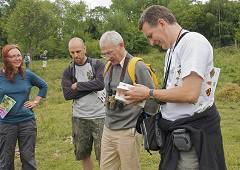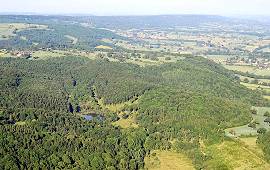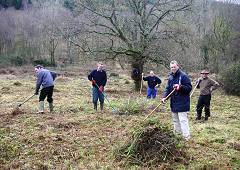Summary
Did the Neroche Landscape Partnership Scheme improve wildlife conservation, access and recreation, learning and skills development in the Blackdown Hills?
Summary
Funded by the Heritage Lottery Fund between 2006 and 2011, the Neroche Landscape Partnership Scheme (NLPS) supported landscape and heritage activities to improve wildlife conservation, access and recreation, learning and skills development within the northern section of the Blackdown Hills Area of Outstanding Natural Beauty. Forest Research gathered evidence of how the NLPS affected partners, participants and surrounding communities, alongside insights and lessons learnt from the scheme’s governance structure.
Key findings and recommendations
Findings
- The NLPS work programme and activities combined expert and local knowledge
- Local stakeholders were surprised and pleased to be given a strong role in decision-making – five members formed a Trust to continue supporting projects in the area
- Tree clearance and grazing longhorn cattle has transformed areas into low intensity mixed wood pasture
- People were concerned about the scale of tree felling and the immediate visual impact of this work, although the project team devoted a lot of time to discuss and alleviate concerns
- The diverse range of NLPS activities reached new audiences and provided new experiences of existing audiences
- Beneficiaries gained new knowledge about the area, learned new skills and felt more confident about participating in and enjoy the local landscape
- It took several years and substantial resources to reach diverse audiences
- Strong leadership from the Forestry Commission was balanced by efforts to share power with the landscape partnership board and the local stakeholders group
- Change in capabilities and priorities within several of the partner organisations likely to affect the type of ‘follow-on’ projects, and the composition and approach of future partnerships
Recommendations
- Large projects require an experienced and capable project leader and core team who facilitate and maintain effective working relationships and drive forward delivery
- Identify synergies between partner organisations early on in the process to facilitate buy-in, support and commitment
- Discuss different expectations and capacity
- Clarify priorities so project partners deliver outputs on time
- Given staff and partners freedom and flexibility to be creative in project design and delivery to encourage a high level of mutual trust and respect
- Large partnerships can hamper collaborative working and professional discussion with the whole partnership; smaller working groups maintain discussion and input from partners and stakeholders
- Sensitivity to local context is a key to success in participatory projects
- Opposition and controversial issues require a sensitive but swift and united response from the management team
- A local stakeholders group creates a highly effective working relationship and a strong sense of acting ‘in the community interest’
- Professional support and training (facilitated by public bodies and third sector organisations) helps to build knowledge, skills and confidence so communities can participate in informed planning and delivery
Publications
Status
The evaluation was completed in April 2011.
Funding and partners
Led by the Forestry Commission, in partnership with:
- Blackdown Hills AONB
- Devon County Council
- Somerset County Council,
- Mid-Devon District Council
- Taunton Deane Borough Council
- Natural England
- The National Trust
- Somerset Wildlife Trust
- Butterfly Conservation
- Somerset Art Works



